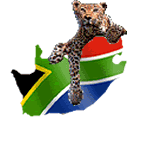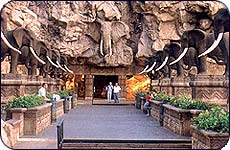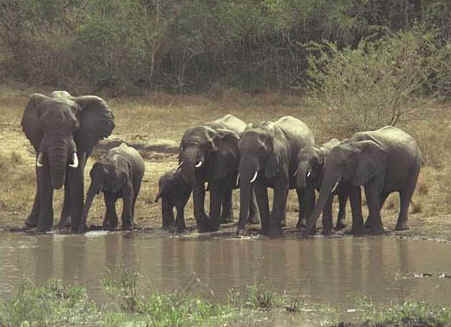|
June
Winter is
now upon us; when setting out in the morning it is better to "dress to
strip". The temperature will increase by at least ten degrees Celsius from
the time you head out on your drive till the time you get back. In the
evenings you should take the necessary extra clothing along with you to ward
off the dropping temperatures.
The flow of the Sand River starts slowing and most of the animals congregate
around the deeper pools on the river to quench their thirsts. Predator
viewing is at its best at this time of year, the lack of vegetation and
established water points make tracking and finding the large cats easier.
The cooler days often result in the cats moving during the day in search of
prey, and many a kill has been witnessed in broad daylight.
July
In many
respects July is similar to June, the only difference is that it is drier,
and animals such as the White Rhinoceros and Cape Buffalo make daily
journeys to the river to drink. Elephants only leave the river bed in the
evening when it is cooler, spending the day feeding on the remaining lush
vegetation.
Towards the end of the month it does start to warm up slightly during the
day, but the evenings are still cold.
August
August is
by far the driest of the months, the temperature rises during the day and
although the nights are still cool the days are very pleasant. There are
many regular visitors to MalaMala who rate August as the best time of the
year to come to see the animals. The grass is now a gold to brown colour and
tends to thin out a good deal.
September
September
is a month of great contrasts, the bush is still dry, but many of the trees
begin to blossom; the brilliant red of the Weeping Boer-bean, the yellow of
the Knobthorn trees or the combination of white and yellow of the Transvaal
Gardenia.
All of these shower a brilliance over what is now a very dry month for the
bush. The last of the winter chills are spent and the days can become hot
again. Viewing continues to be exceptional with the lack of water and sparse
ground cover.
October
The
bushveld is now waiting in anticipation for rain, the days warm up enough to
create thunder storms in the afternoons. The storms do not usually bring
much rain, but certainly enough to start the early growth of the bush and
flush a fresh green colour. The trees have mostly lost their blossoms and
new green leaves shoot. satisfying the Giraffe, Kudu and other browsers.
November
The days
now become warmer and the chances of afternoon showers greater. The general
appearance of the bush is now green and the grass starts to coppice, this
will attract the grazers like Zebra, Wildebeest and Buffalo. The flow of the
Sand River will also increase and become more steady.
Plenty of migrating birds will arrive to take advantage of the summer
conditions, some of them would have come from further north in Africa and
some would fly all the way from Europe.
The end of the month would see the arrival of the first Impala lambs.
December
This is
indeed a busy time on the reserve, as the lambing of the Impalas and the
calving of the Wildebeest gets into full swing. The predators take full
advantage of the abundance of youngsters and the evenings are full of
action.
The characteristic Woodland Kingfisher arrive and their trill like call
joins the melody of songs as many of the birds begin to make their nests.
The welcome thunder storms are followed by hatches of insects that birds and
mammals take full advantage of.
The long hot days result in a great amount of movement in the cooler
evenings as the animals appear to be taking full advantage of this time of
abundance. |





